Thirty-five years ago today, the Canon EOS 650 arrived and changed the face of photography. It was Canon's first ever EOS camera, and while it might not look like a relative of the iPhone, it has a surprising amount in common with Apple's game-changer – including the fact that it was a bold break from the past whose new twist on existing tech took its industry into a new era.
To really understand how important the EOS 650 was, we need to travel back to March 2, 1987. Interestingly, on the exact same day, Apple was preparing to reveal the Macintosh II, while later that year Nokia would introduce its first handheld phone, the Cityman 1320. But the camera world was also in the midst of a tech revolution.
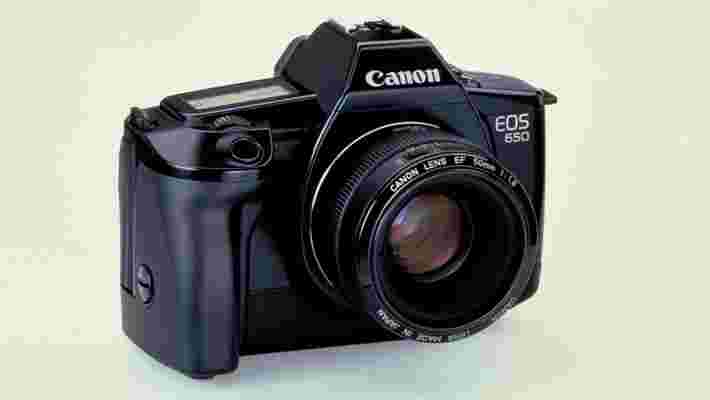
Like phones and capacitive touchscreens in 2007, cameras in the mid-80s were dabbling with an exciting new tech called 'autofocus'. Leica got the ball rolling in the late 1970s, but Minolta shocked the photography world by launching the first SLR with in-body autofocus (the 7000AF) in 1985.
That camera is the LG Prada phone in this story, though, because it's a largely forgotten trailblazer. Just like Apple 20 years later, Canon sensed an opportunity to forge ahead – and it grabbed it, producing a camera system that's the reason why it's still on top of the photographic world today.
Electric dreams
Canon did have autofocus cameras and lenses in the early 1980s, but the tech had hit a ceiling. As Canon developer Yasuo Suda explains, "before the EOS series was launched, our cameras featured the FD lens mount. However, a fully-electronic mount was essential in order to achieve a high level of AF technology".
That meant one thing – dropping the mount that its existing SLR fans had bought into, and creating a brand new one to take a leap ahead in autofocus. It would be a bold step, not least because autofocus wasn't considered the holy grail by everyone. Nikon, the clear leader in pro cameras at the time, saw the tech as something of a gimmick for professionals, confident that most serious photographers would want to focus manually.
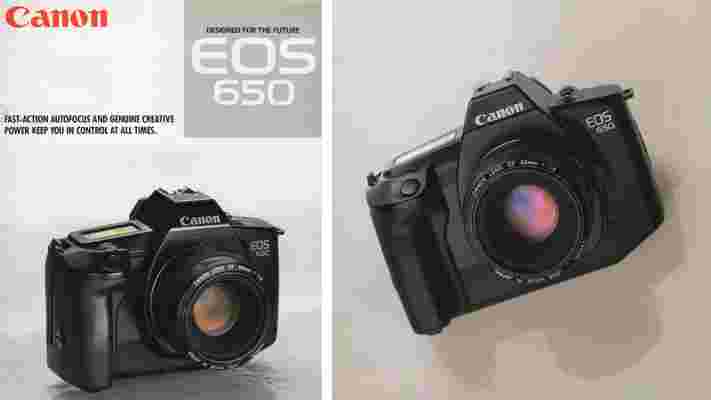
But Canon decided to take the plunge in 1985, and two years later its 'Electro Optical System' (or EOS) was born with an advanced amateur camera called the Canon EOS 650.
It was a big deal for two reasons. Firstly, EOS was the first system to create a fully electronic connection between an SLR camera and its lenses, which ultimately took autofocus beyond the slow, clunky experience of the time. And it also heralded the dawn of the EF-Mount, which is still in use on Canon's DSLRs today – and uses exactly the same physical design.
Just like the original iPhone, the Canon EOS 650 was a futuristic-looking gadget built on a proprietary platform that'd set the tone in its field for decades to come. But it was also, similarly, far from the finished product when it launched in 1987.
A 'high-tech' companion
What did people say about the Canon EOS 650 at the time? In a 1987 review titled "Camera; a new experience in simplicity" , the New York Times' Andy Grunberg said that while "it took a few days to get relaxed with my high-tech companion", he found that it performed "a remarkable number of feats without any intervention or input from the person holding it".
He praised the single-point autofocus system, marveling that "all I needed to do was to press the button the rest of the way down and the picture was taken", but was less impressed with the overly-sensitive shutter button. Still, the conclusion was that "using the Canon EOS 650 has improved my opinion of auto-focusing, electronic SLRs" and that "certain aspects of their whirring, blinking performance are actually fun".
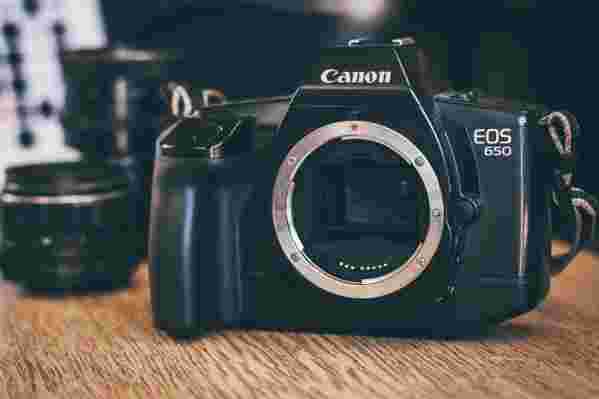
While the EOS 650 was a film camera, it was the dawn of the modern, electronic shooting experience – one that became so widespread that using a Canon EOS 650 today is still pretty intuitive. But like the original iPhone (which didn't have an App Store at launch), it was really the EOS 650's successors that established Canon as the biggest name in photography.
The first crucial USM (UltraSonic Motor) lenses only started to arrive from November 1987, with the EF 300mm f/2.8L USM. These importantly put a small, quiet autofocus motor inside the lens, rather than the camera. Steve Jobs exclaimed at the iPhone launch that Apple had "patented the hell out of it", and Canon did the same with its new tech.
This led to genuine pro revolutionaries like the Canon EOS 1 and EOS 1N, which are regarded by many as two of the most influential cameras of the last half a century. So much so, we're eagerly awaiting their spiritual mirrorless successor in the rumored Canon EOS R1 .
Focus peaking
What's fascinating about the Canon EOS 650, in another parallel to smartphone cameras, is how it was advertised and marketed back in 1987.
The tagline of one US TV advert was "now you don't have to be a pro to shoot like one". Another said "one of these guys is a pro photographer, one's a dentist – with the autofocus Canon EOS, it's tough to tell them apart". And the advert below introduces the EOS 650 as a new point-and-shoot king.
While that didn't quite turn out to be the case, the Canon EOS 650 certainly laid down a blueprint for a new, modern SLR camera. Like the earlier Canon T90, it removed buttons, stripped down the shooting experience and prioritized usability – sound familiar? Who'd have guessed that Apple, which in 1987 was struggling away with the Macintosh, would become one of Canon's big point-and-shoot successors during the 2010s.
The EOS 650's design, which is so painfully 80s it must share the same genes as Knightrider's KITT car, perhaps explains why it's often overlooked by those looking to pick up a film camera today.
Classic, fully mechanical bodies like the original Olympus OM-1 tend to draw the eye of retro camera shoppers, but the EOS 650 remains well worthy of investigation –particularly if you already have EF lenses and don't need the old-school, manual-only film experience.
While it launched for around $830 / £620 / AU$1,140 in 1987 (if you adjust its price for inflation), you can now pick up an EOS 650 on eBay for only $25 / £25. Not bad for a camera that sparked an autofocus revolution, changed photographic history – and even allegedly took the first photo to be uploaded to the web in 1992.
Move over, Tinder Swindler – there's a new Netflix movie chart topper in town
All good things must come to an end – and that includes The Tinder Swindler's dominance of Netflix's movie chart.
After a three-week reign as the most popular Netflix movie , The Tinder Swindler has been knocked off its perch by a slightly unusual contender. The film in question? An original Netflix comedy flick from Tyler Perry called A Madea Homecoming.
"A Madea who now?", we hear you say. Well, A Madea Homecoming is the twelfth (!) movie in the Madea cinematic universe – yes, you read that right – that Perry created in the late 1990s. Madea, whose full name is Mabel 'Madea' Earlene Simmons, has also starred in 11 stage plays and an animated movie.
But we digress. According to the latest update to the Netflix Top 10 lists , which reveal the most popular films and Netflix TV shows among subscribers over the past week, A Madea Homecoming beat The Tinder Swindler and Texas Chainsaw Massacre to top spot. And by quite a margin, too.
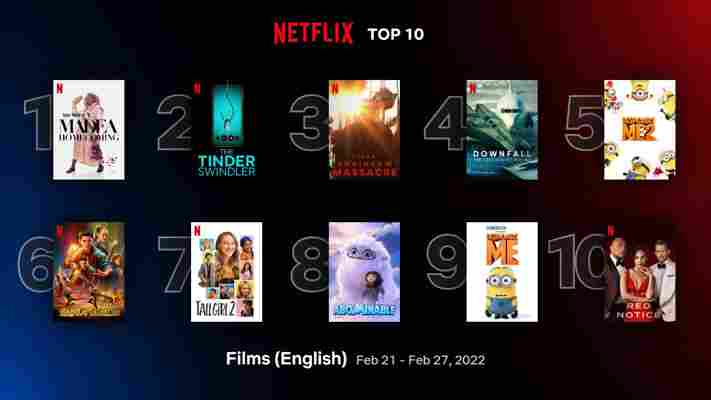
A Madea Homecoming wasn't released until Friday, February 25, but it certainly left its mark on Netflix's Top 10 movies list. The comedy flick amassed 31.56 million hours viewed in its first two days on the streaming giant – a figure almost twice as big as its nearest contenders.
By contrast, second-placed The Tinder Swindler only earned 17.67 million hours viewed. That's a notable drop-off from its third week on the platform, when it secured 34.45 million hours, and a far cry from its 64.7 million total in its second week of release.
Texas Chainsaw Massacre, which took third spot, accumulated 17.44 million hours viewed. Downfall: The Case Against Boeing and Despicable Me 2 took four and fifth place respectively, but each movie accrued less than 10 million hours apiece.
A Madea Homecoming's victory is all the more surprising due to its critical reception. The film currently holds a 44% rating on review aggregator site Rotten Tomatoes , with Roger Eberom's Odie Henderson calling it "a hot mess, as usual". Still, Netflix's audience seems to have enjoyed it. A Madea Homecoming holds a 75% rating among viewers on Rotten Tomatoes, and there's a far more diverse range of audience reviews in comparison to critics who weren't enthralled by Perry's latest movie.
It seems, though, that A Madea Homecoming benefited hugely from its late February release.
Aside from a couple of original Netflix foreign language movies, Texas Chainsaw Massacre, and a docufilm about US race car driver Bubba Wallace, Netflix's movie offerings were pretty slim in the back half of February. Subscribers looking for a new film to watch, then, didn't have much to choose from – a situation that's sure to have aided A Madea Homecoming's cause.
It'll be interesting to see if Perry's latest flick continues to dominate the charts in early March. A slew of licensed movies, including the Chadwick Boseman-starring 21 Bridges, as well as Shrek 1 and Shrek 2 have already landed on the streamer. And, with Netflix original flicks like Against the Ice and The Adam Project launching very soon, we'd be amazed if A Madea Homecoming keeps its crown for much longer.
For more Netflix movie content, check out our best Netflix documentaries and best Netflix movies under two hours lists to see which classics you may have missed. We also publish our own list of the 10 biggest movies on Netflix weekly, if you're keen to see a further breakdown of the most popular titles.
Nintendo Switch Online adds its own Xbox Rewards achievement system
The latest update for Nintendo Switch Online has added a new missions and rewards system, which lets you complete challenges to earn My Nintendo platinum points that can be spent on exclusive profile rewards.
The new system is similar to Xbox Rewards, in that it allows you to complete simple challenges on your console to unlock digital freebies. So far, these challenges involve using the features in the Nintendo Switch Online subscription service, such as playing a Switch game online, backing up your save data, or playing an NES game through its library of classic Nintendo titles.
Nintendo says you’ll be able to complete most missions “simply by doing things you’re probably already doing with your Nintendo Switch Online membership”. All the missions that have been released so far renew on a weekly or monthly basis.
Completing a challenge will earn you between 20 to 100 My Nintendo platinum points, which can be redeemed for digital wallpapers, physical items from the online My Nintendo Store, and new profile elements, such as frames, characters, and backgrounds that can be combined to create your own, custom user icon.
The available icon elements will refresh each week and follow a monthly theme. This month’s theme is Animal Crossing - specifically, those characters from Animal Crossing: New Horizons who have a birthday in March - and Super Mario Odyssey. They’ll refresh on April 3.
With the update already live, anyone with a Nintendo Switch and a subscription to the console’s online membership can head to the Nintendo Switch Online app and find the “Missions & Rewards” tab on the left to start completing challenges or browsing unlocks.
Analysis: an easy way to bag platinum points
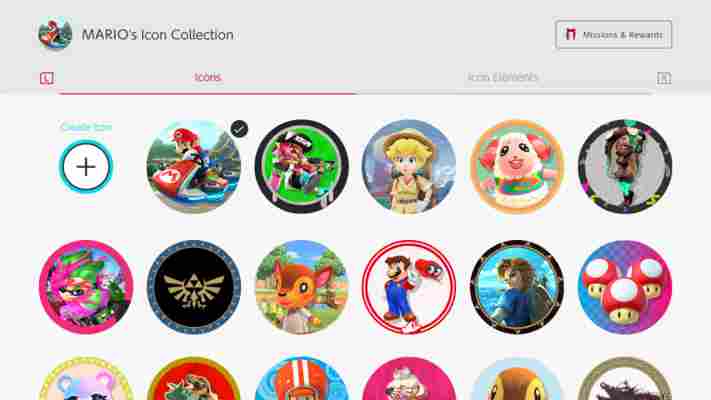
Like Xbox Rewards before it, Nintendo’s new missions and rewards system is designed to encourage you to check out the full spectrum of Nintendo Switch Online’s features, locking you further into the subscription service. But if you’re already subscribed, it’s an easy way of accumulating platinum points to spend in the My Nintendo Store.
In the first batch of challenges, you can back up your saved data once a week for 20 points, play online for 30, and load up an NES title each month for a quick 50. That’s a straightforward way of racking up some points with very little effort.
Once you’ve collected a few hundred, you’ll be able to redeem them in the rewards section of the My Nintendo store for some petty snazzy item. 500 of the shiny platinum tokens will net you a Metroid Dread pin set or a poster of a classic N64 game . If you don’t fancy saving that much, 400 points can get you a roll-up Animal Crossing bag , while 300 can be redeemed for a mini calendar set . You’ll still have to pay delivery, mind, so try splurging the points in one go to save on postage costs.
It’s best to not subscribe to Nintendo Switch Online just for the sake of earning the platinum points, but if you’re already signed up, it’s worth completing the challenges as they renew. If you do, you may have some shiny Nintendo merchandise coming through your letterbox in a few months.
If you fancy subscribing, find the best 12-month subscription deals below.
